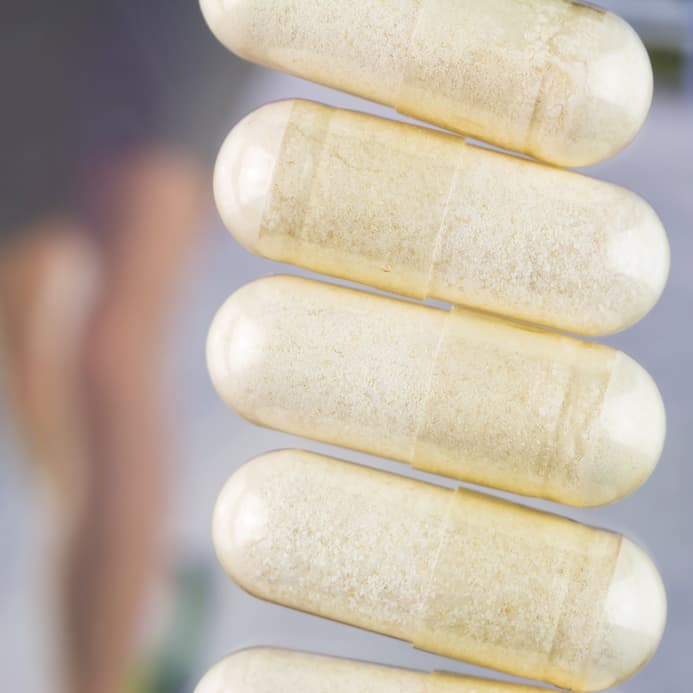
The human body harbours different microbial ecosystems, also called microbiota, in some parts of the body, such as in the surface or deep layers of skin, the mouth, gut, lungs, vagina. The adult gut microbiota contains up to 100 trillion micro-organisms, ten-fold the number of human cells, including at least 1,000 different species of known bacteria (1,2).
The habitual residents of the gut interact with their host in a very intricate manner. The microbial community may modulate the effect of potentially harmful bacteria, impact the host’s gastrointestinal tract, digestion, metabolism and immune system, and might even influence functions beyond the gut (3). Dietary modulations of the human gut microbiota can be of great benefit to health. Probiotic bacteria may be defined as ‘live micro-organisms which, when administered in adequate amounts, confer a health benefit on the host’ (4).
The gut microbiota
The various digestive compartments present a set of ecological niches, each offering a favourable environment depending on pH, transit time, or bioavailability of nutrients. The stomach contains few endogenic bacterias and the first parts of the intestine only contain very low numbers of microorganisms, mainly Lactobacilli and Streptococci. Gradually, near to the terminal end of the small intestine, the microbiota becomes more abundant and diverse with strict anaerobic bacterias. Microbial communities in the gut include native species that colonize the intestine permanently, and a variable set of living microorganisms that transit temporarily through the gastrointestinal tract. It was demonstrated that one third of the gut microbial ecosystem is common to most people, while two thirds are specific to each one of us (5). In other words, the single individual gut microbiota is like an individual identity card.
While each of us has a unique microbiota, it always fullfils the same physiological functions, with direct impact on our health. The gut microbiota plays a role in the maturation of the GI tract and also take part in the maturation of the intestinal immune system. Furthermore, the microbiota helps the body to digest certain foods that the stomach and the small intestine have not been able to digest. The fermentation metabolites produced by gut micro-organisms are mostly absorbed and used by the host with health benefits. The intestinal microbiota also participates in the synthesis of certain vitamins such as vitamin K and some B vitamins.
The GI tract can be described as the body’s largest immune organ. It represents the host’s greatest area of mucosal contact with the environment and contains as many as 80% of all antibody-producing cells (3). It helps us combat aggressions from other microorganisms, maintaining the wholeness of the intestinal mucosa thanks to the barrier effect.
While the ‘healthy’ gut microbiota is seen to be a stable community, there are stages within the life cycle of humans during which there can be alterations in the structure and function of this population. Pathologies such as inflammatory bowel diseases, obesity, type 2 diabetes, irritable bowel syndrome, Clostridium difficile-associated disease, and others, have been linked to changes in the composition of the gut microbiota referred to as dysbiosis (6). A dysbiosis is defined by lower species diversity, fewer beneficial microbes and/or the presence of potentially pathogenic microorganisms. Factors such as antibiotics, psychological and physical stress, and certain dietary components have been found to contribute to intestinal dysbiosis (7).
Probiotics
Probiotic bacteria are live microorganisms with no pathogenicity, and with functions of importance to the health and well being of the host (8). They are administered to improve microbial balance, particularly in the gastrointestinal tract. They consist of mainly lactic acid bacteria, such as Lactobacillus and Bifidobacterium species.
Protective effects of probiotics against certain intestinal infections have been shown in a large number of clinical trials, in particular in children, ingestion of probiotic bacteria may reduce the severity and frequency of diarrheal diseases (9). Furthermore, people performing a journey from an industrialized country to a developing country, especially in tropical regions, can also be victims of infectious diarrhea: it is the traveler’s diarrhea or turista, also defined as infection of digestive origin by an enteropathogenic bacteria.
Intestinal inflammatory disorders
Several studies have provided evidence that specific strains of probiotics are able to stimulate as well as modulate several aspects of natural and acquired immune responses. Diet and associated changes in the gut microbiota are driving increasing incidences of inflammatory immune disease in developed countries such as IBS, Crohn’s disease,etc. Studies done so far state that probiotic supplementation is able to provide protection from various inflammatory chronic diseases (10-12).
Lactose intolerance
Lactase-deficient adults demonstrate improved lactose absorption and fewer symptoms when consuming yogurt than when consuming milk containing equivalent amounts of lactose (13). Indeed, the replacement of milk by yoghurts or fermented milk products provides better digestion and decreases diarrhea and other symptoms of intolerance in lactose maldigesters.
Allergic diseases
In a double-blind randomized placebo-controlled trial, Lactobacillus rhamnosus was administered to pregnant women (1010 CFU/day) for 4 weeks before childbirth. Lactobacillus rhamnosus was also administered to infants at high risk of allergy for the first six months of life. Results showed that L. rhamnosus was effective in prevention of early atopic disease in children at high risk (14). In other clinical studies with allergic infants to cow’s milk, atopic dermatitis was alleviated by ingestion of probiotic strains of Lactobacillus rhamnosus and Bifidobacterium animalis lactis (15).
Vaginal infections
The vagina normally contains lactobacilli that keep the acidity necessary to avoid the proliferation of harmful organisms (16). In the case of vaginitis, the number of lactobacilli decreases while the number of harmful bacteria raises abnormally. Increasing studies showed the interest of probiotics for reducing vaginal infections. Bodean et al., (17) showed that women with bacterial vaginosis who used probiotics oral capsules with Lactobacilli, while taking an antibiotic, had lower recurrence rates compared to women who did not receive any probiotics or probiotics vaginal capsules.
Probiotics in food supplements
Probiotics must remain viable in their delivery format in order to confer a health benefit. Available as food supplements (capsules, sachets of powder), probiotics are also contained in various fermented foods, most commonly yogurt or dairy drinks. It may contain a single microorganism or a mixture of several species. The most widely used probiotics include Lactobacillus and Bifidobacterium species. There is no consensus about the minimum number of microorganisms that must be ingested to obtain a beneficial effect; however, a probiotic should typically contain more than one billion living microorganisms to increase the chance that adequate gut colonization will occur (18).
The factors that affect probiotic viability are mainly moisture (relative humidity) and temperature. The associated ingredients must also be taken into account (additives, salt, vitamins, minerals, etc) for the evaluation of probiotic viability. Monitoring and controlling these factors during all the production process and the storage time will significantly impact on the product quality. Packaging permeability must also be under control to optimize survival to assure delivery of the probiotic within the product to the consumer.
Adapted formula – selected strains
Probiotic strains must be safe and effective in humans, remain viable for the shelf life of the product, and not have pathogenic properties (19,20). Probiotic strains must also be selected regarding their own robustness, which differ from one to another.
Products containing more than one organism are particularly appealing for two reasons: colonization in some patients may occur with one strain and not another, and probiotic mixtures may act in synergy. Moreover, the other ingredients composing the formula, must be analyzed for their potential negative interaction with the probiotic strains.
Dedicated manufacturing and packaging
At controlled temperature (20°C), the most important parameter is moisture and especially relative humidity of the air during process. Mechanical stress (shear forces, high pressure => tablets) cannot be used.
Packaging permeability must be controlled to protect from the factors mentionned above. In order to achieve a stable food supplement, the most suitable galenic forms are HPMC gel capsules and multiple layers sachets.
Analytical controls
Analyses are necessary to ensure the quality of the probiotic product and are carried out with specific accurate methods in order to count the Colony Forming Units. Regarding stability, an adapted expertise can provide stakeholders with food supplements of which probiotics remain alive even 24 months after packaging, at room temperature.
Conclusions
Probiotics exert their beneficial effects through various mechanisms, including lowering intestinal pH, decreasing colonization and invasion by pathogenic organisms, and modifying the host immune response. There is substantial scientific consensus that probiotics may provide beneficial health effects and modulate the immune system, improve lactose intolerance or resolve some diarrheal diseases. And the consumers easily feel the benefits. However, probiotics must be delivered in viable adequate amount. For achieving a product that will deliver the target dose of viable probiotics at end of shelf-life, despite the challenges of temperature and humidity, it is necessary to follow a complete approach comprising a combinaison of appropriate raw materials coupled with good manufacturing processes and appropriate packaging.
PL
References
(3) BINNS N. Probiotics, prebiotics and the gut microbiota. ILSI Europe Monograph Series. 2013
(9) DICKINSON B, SURAWICZ CM. Infectious diarrhea: an overview. Curr Gastroenterol Rep. 2014, 16(8):399
(11) MASLOWSKI KM, MACKAY CR. Diet, gut microbiota and immune responses. Nat Immunol. 2011, 12(1):5-9




